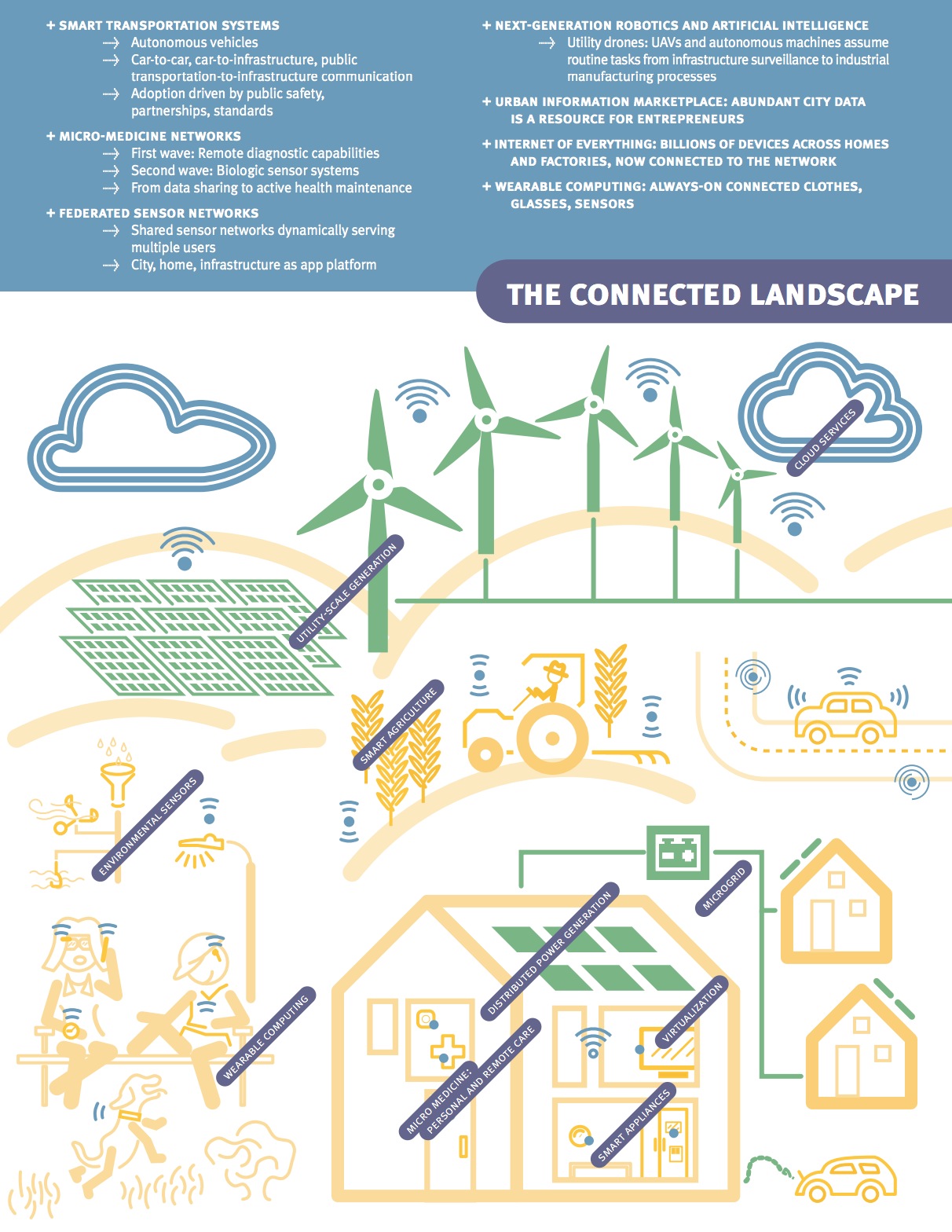BAY AREA COUNCIL ECONOMIC INSTITUTE
Executive Summary
Recent advances in energy and communications technologies have outpaced anything the human race has seen since either the invention of the telegraph or the discovery of alternating current. Many of these advances have enabled technologies that were once the realm of science fiction—driverless cars, implanted medical devices, and vast supplies of renewable energy. Today, these and related technologies are shaping up to be as important to California’s prosperity in the 21st century as roads and waterways were in the 20th. However, the pace of innovation is increasingly pushing up against the physical constraints of California’s legacy energy and communications infrastructure. Without upgrading to 21st century infrastructure, California will not keep up with the level of competition and the rate of change in today’s global economy.
Investment in 21st century infrastructure will enable new technologies that will improve the lives of californians. Advanced communications networks with greater bandwidth for mobile and internet communications can support a range of public benefits including entrepreneurship, education, public safety, healthcare, and civic engagement. Californians will benefit from advanced communications through:
- Improved delivery of public services and broader civic engagement.
- Improved access to healthcare through video conferencing, remote sensors, and diagnostic tools, reducing hospital and physician visits and saving costs.
- Improved efficiency and access to education—particularly for working students and those in rural areas—through digital education platforms. Schools that have received network investments, and are able to utilize technology more widely, have reported academic gains.
Advanced energy technologies that enable the multi-directional flow of information and electricity can improve environmental quality and enhance consumer choice. Benefits to Californians include:
- Greater resiliency and reliability in the face of natural disasters. Greater environmental benefits through better integration of renewable energy into the grid.
- Greater transparency across the electricity system from generation to use, improving power management and creating new business opportunities for innovative companies, especially in regard to data management and optimization.
- Greater choice for consumers in how to manage their energy use, providing an opportunity for cost savings by matching pricing, time of use, and other preferences.
Evolving telecommunications technologies and business models require a new regulatory framework. Building physical infrastructure requires large financial investments, navigation through permitting and other regulatory requirements, and a sustainable revenue model. Cost is the most cited hurdle in completing local broadband projects. A 21st century regulatory structure needs to be reflective of the character of modern infrastructure, changing demands on it, and evolving marketplace dynamics. For example, AT&T is investing in internet-based phone networks as part of its push to move to more powerful all-digital services, while Comcast is currently delivering all-digital telephone services within the state. However, in California, telecommunications operators must maintain their legacy wire telephone networks, creating an added cost burden that can slow investment in faster technologies.
Investment in California’s electricity grid is necessary to achieve environmental goals, including the greater use of renewable power, and to ensure grid reliability.
The power grid is transforming from a centralized model with a one-way flow of electricity to a model with geographically diverse generation systems and new roles for consumers, grid operators, and power generators. Driving factors behind this shift include:
- Changing consumer expectations regarding the management of their energy use and the reduction of their environmental impact.
- Public policy, including California’s Renewables Portfolio Standard, the California Global Warming Solutions Act (Assembly Bill 32, or AB 32), the US Environmental Protection Agency’s rules on reducing emissions from the electricity sector, and other policies that target reduced levels of carbon dioxide (CO2) emissions.
- Increasing penetration of renewable energy systems: As of 2012, renewable energy accounted for 13 percent of total electricity generation in California, and just 4 percent nationally. In 2013 alone, 2,145 megawatts (MW) of utilityscale solar capacity entered service in California (for comparison, large natural gas-fired power plants have an average capacity of 500 MW), giving the state total solar capacity of more than 8,500 MW. Topping the nation, 2,332 MW of solar capacity has been installed by residents and businesses in California, more than two times that of the next most-active states, Arizona and New Jersey.
- Strong electric vehicle (EV) uptake in California, which is expected to account for 25 percent of all EVs sold in the US through 2020. EV charging is placing greater demands on the grid, with each vehicle’s needs roughly equivalent to those of the average residential customer, though EVs also represent a potential source of distributed storage that can provide grid benefits.
Download full version (PDF): Keeping California Connected, Powered, and Competitive
About the Bay Area Council Economic Institute
www.bayareacouncil.org
The Bay Area Council is a business-sponsored, public policy advocacy organization for the nine-county Bay Area. The Council proactively advocates for a strong economy, a vital business environment, and a better quality of life for everyone who lives here.
Tags: Bay Area Council Economic Institute, CA, California, San Francisco Bay







 RSS Feed
RSS Feed